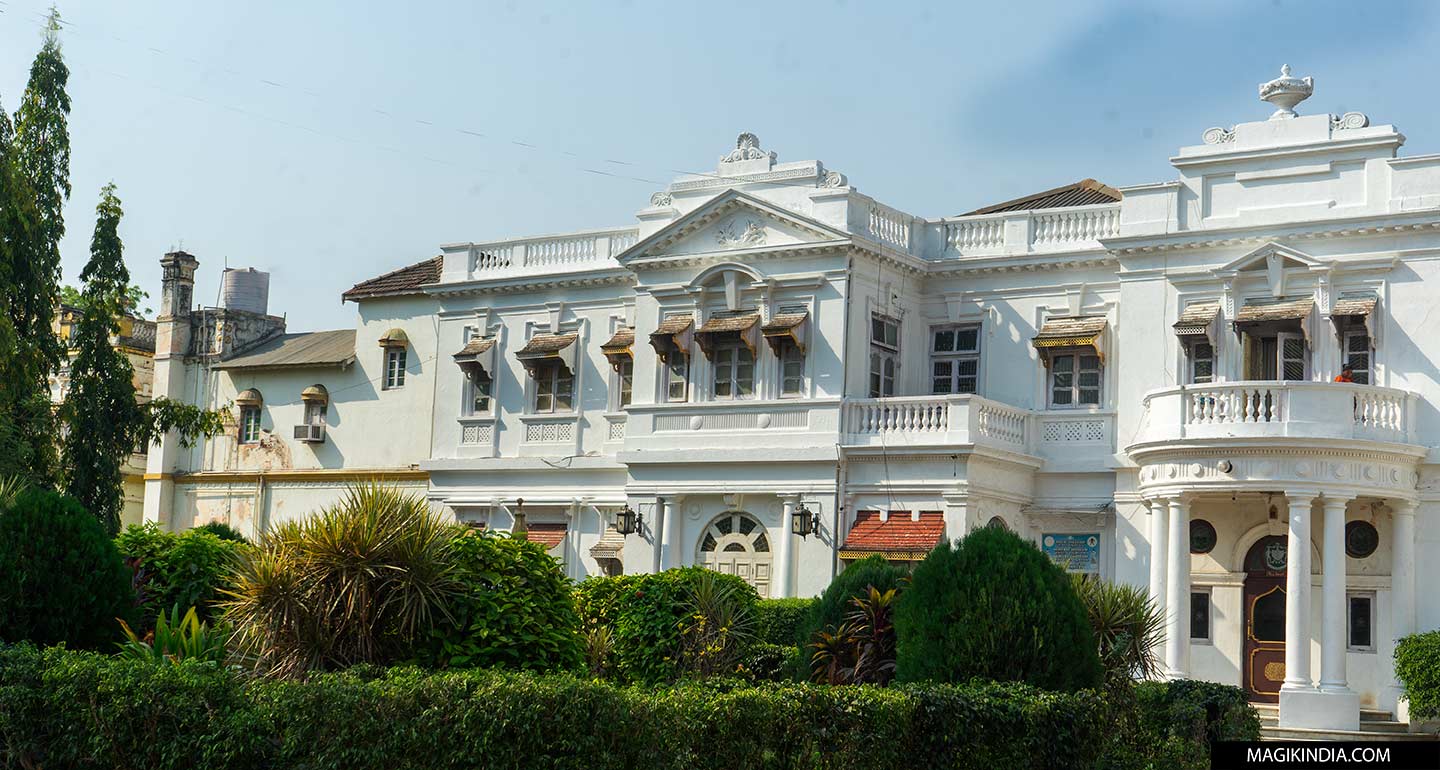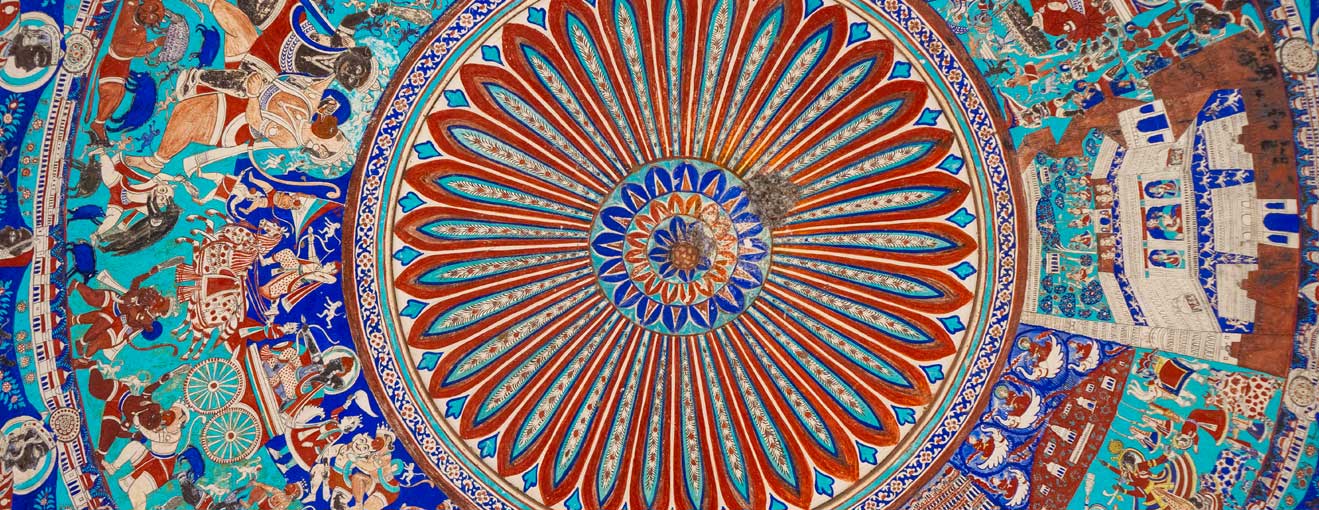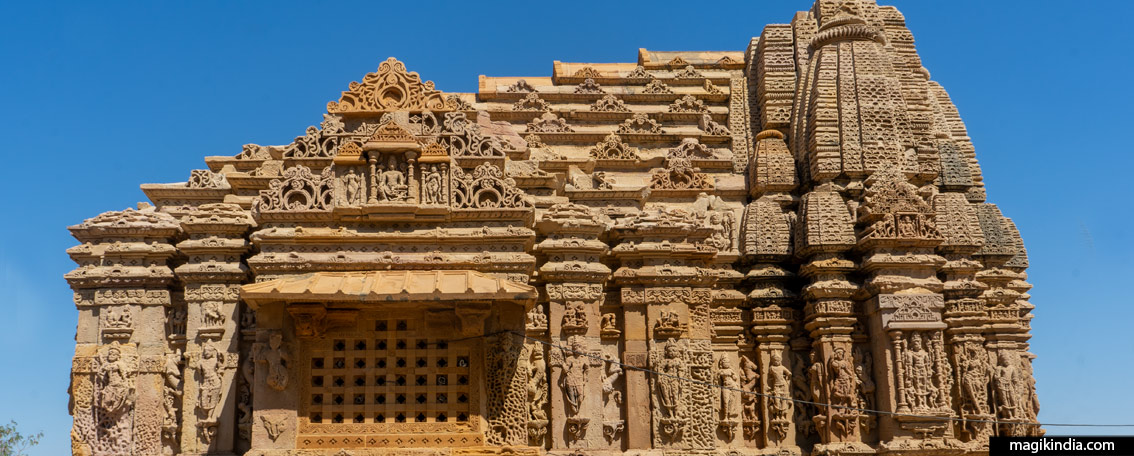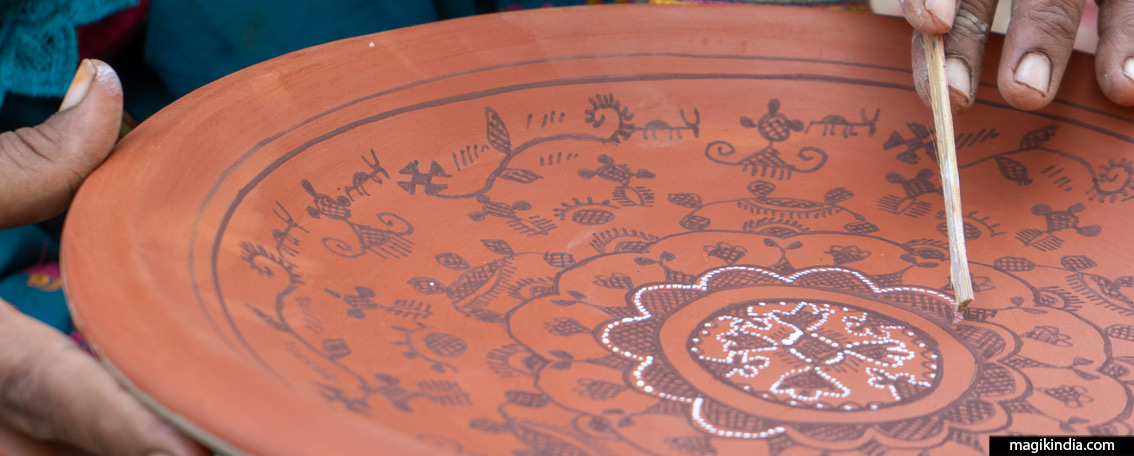
Khavda, the pottery of the Indus Valley
In the north of the district of Kutch (Gujarat), on the edge of the great white desert, is the village of Khavda which gave its name to a very specific ceramic, whose origins date back to the thousand-year-old civilization of the Indus Valley. While the art of pottery from this region has survived since the Bronze Age, it struggles to find its place in the modern world.
Abdul Bhai’s family workshop is at the end of a bumpy country lane, which is hard to find the first time you go there. This family of kumbhars (potters) from Sindh (present-day Pakistan) has been practicing this craft for generations.
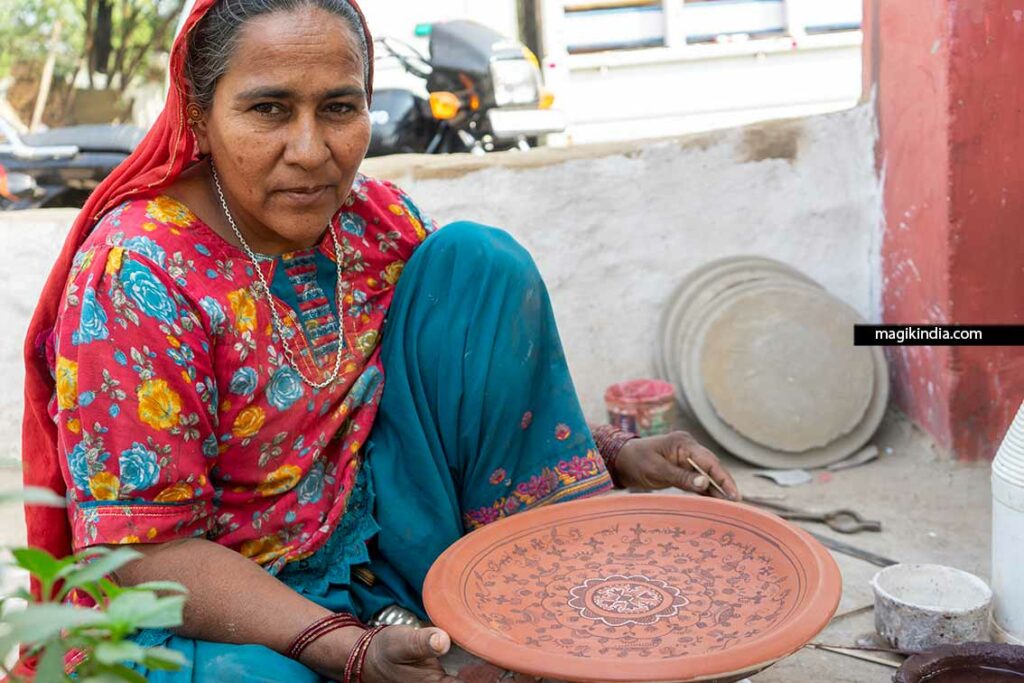
When we arrive, Rahima Ben, Abdul’s wife, is finishing the decoration of a plate by adding white dots using a bamboo twig. She raises her head and recognizes me, this is the second time I meet this friendly artisan. Between these two visits, my travel agency organized several meetings with these kumbhars; it’s our way of supporting this art which could well disappear in a few decades.
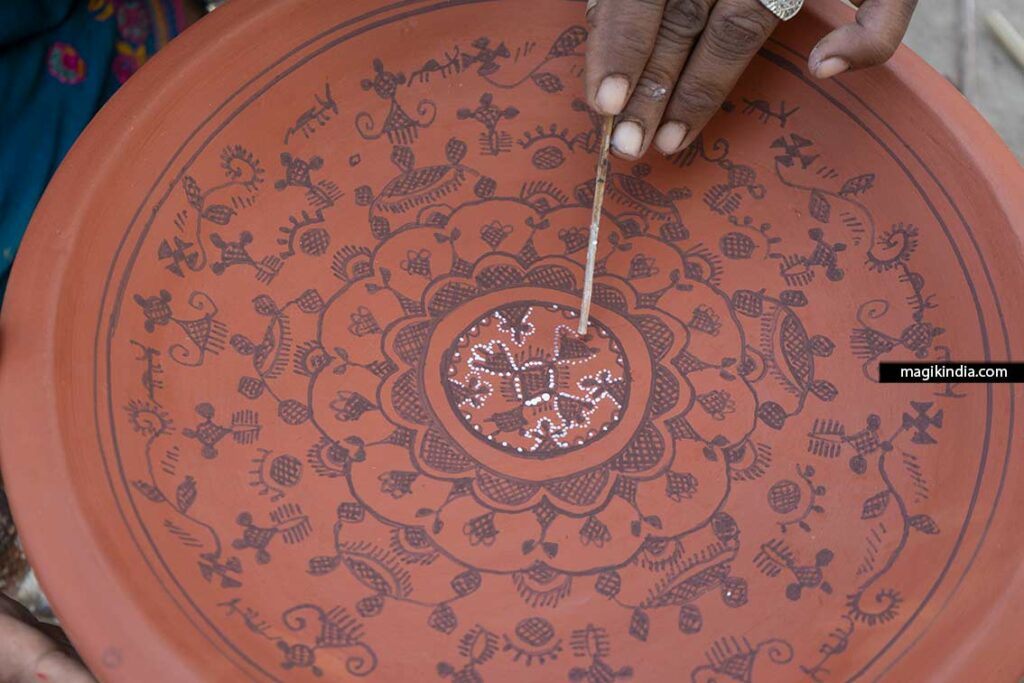
And it would be a significant loss artistically, because Khavda ceramics are unique. It is recognizable by its reddish-brown color and its black patterns punctuated with white dots.
This pottery is said to have its origins in the Indus Valley. In 1968, when the archaeological site of Dholavira*, an hour from Khavda, was discovered, ceramics with similarities to those of Khavda were unearthed. We find there in particular the black drawings on a red background. The art of ceramics had a special place in Dholavira, more than a hundred potters’ wheels have been found there.
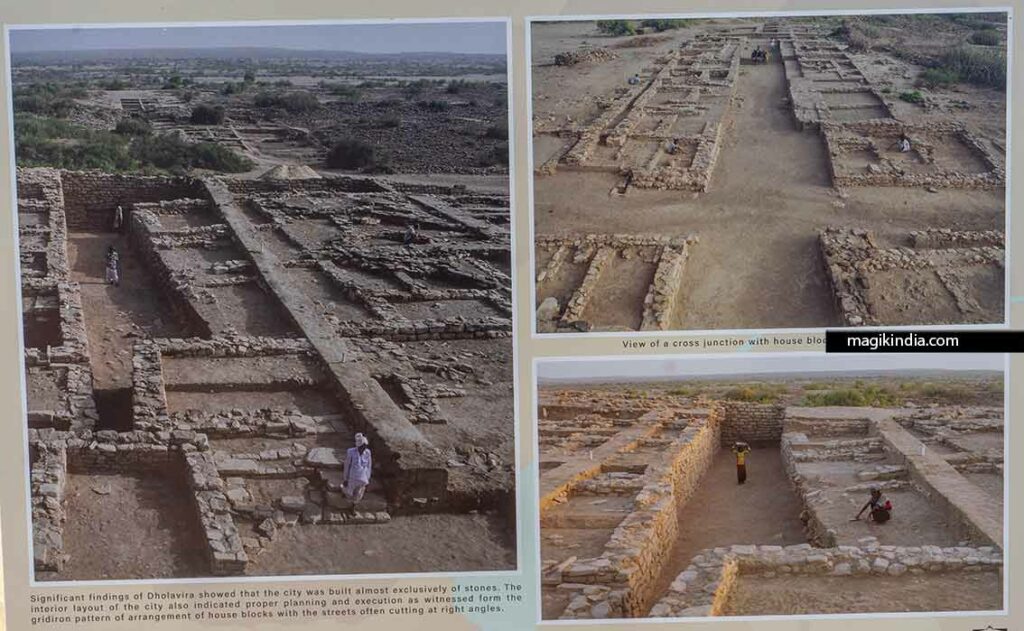
*Dholavira is a so-called Harappan or Indus Valley Civilization city. It is one of the very few well-preserved urban settlements in South Asia dating from the 3rd to mid-2nd millennium BCE. It is the sixth largest site out of the 1,000 Harappan sites discovered so far.
Khavda ceramics have, over time, adopted their own style, influenced by various artistic traditions.
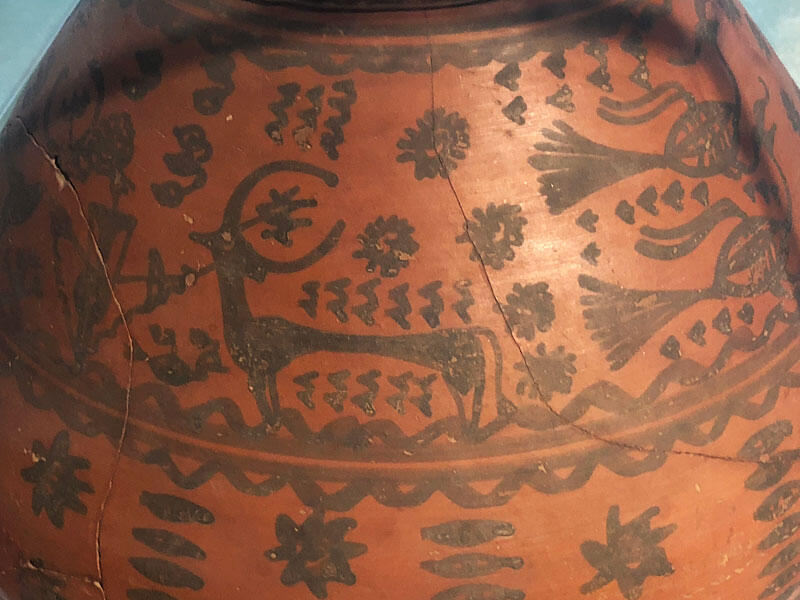
Khavda pottery is made from materials found locally. The clay called “Rann ki Mitti” (Rann clay) is collected near a lake around the village, then shaped on a potter’s wheel and left to dry.
Before being put in a kiln heated with wood and cow dung, the containers are immersed in a mixture of water and “geru” (ochre powder) which gives Khavda pottery its red signature.

Once the color dries, the utensils are decorated with black and white patterns created from natural pigments. It is women who paint the objects, they are not normally allowed to model the objects on a potter’s wheel, work which is the prerogative of men only.
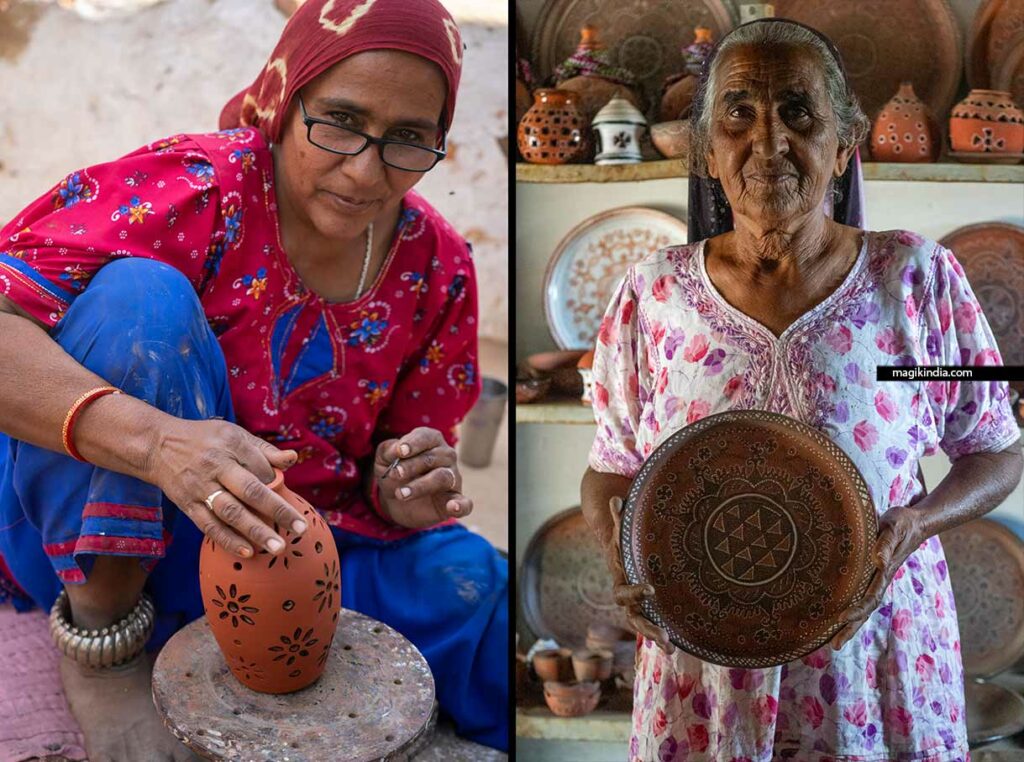
The designs painted on Khavda pottery are generally abstract and geometric in type. You can observe animals (cows, fish), floral motifs and stylized characters.
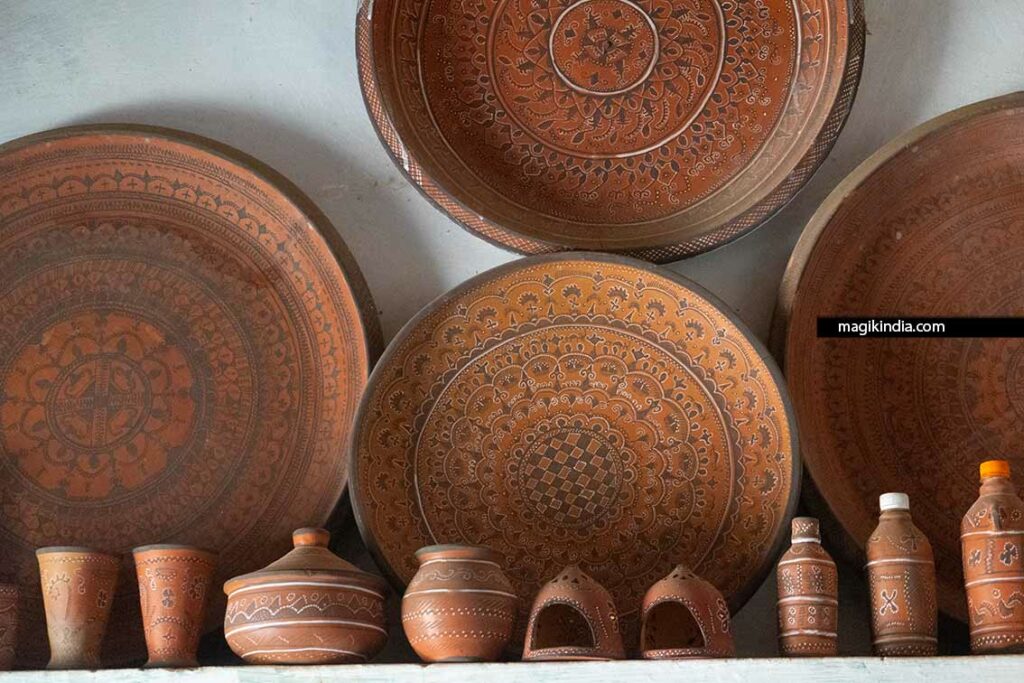
The objects created are diverse: plates, trays, jugs, glasses, various boxes, lamps and even gramophone to amplify the sound of a cell phone!
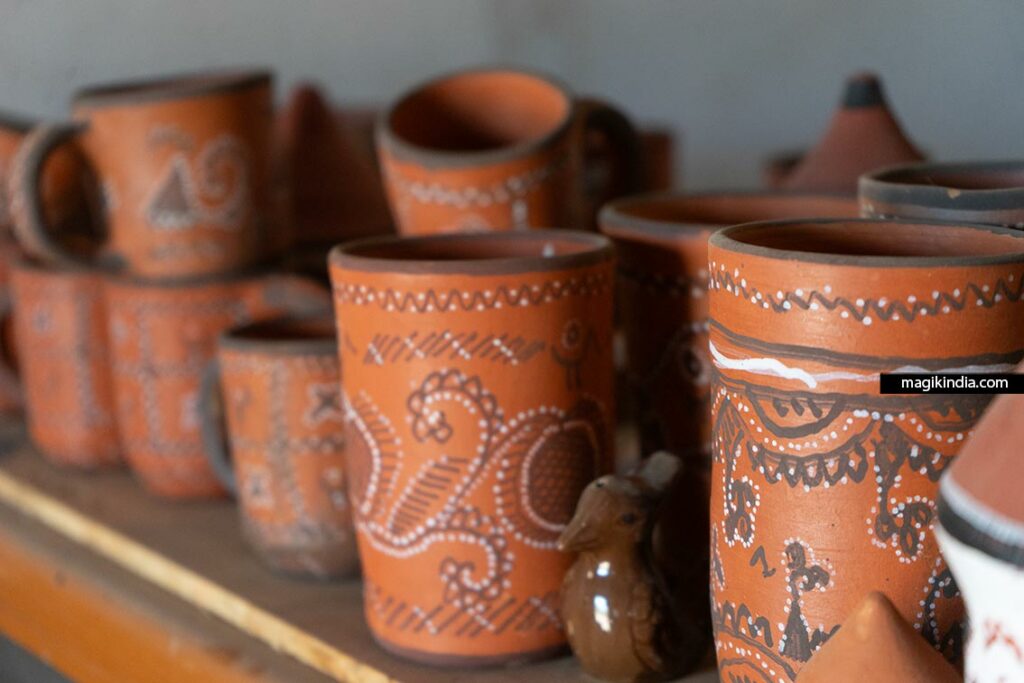
In the absence of successors to perpetuate Khavda pottery, this age-old art risks being lost.
Some initiatives have been taken in particular by Khamir, a Kutch trust created in 2005 for the promotion of traditional crafts and associated cultural practices. This platform launched programs that brought many artisan potters from Kutch to come and experiment with new techniques and create innovative product ranges.
Hopefully this will breathe new life into Khavda pottery.
TRAVEL WITH US IN GUJARAT1
